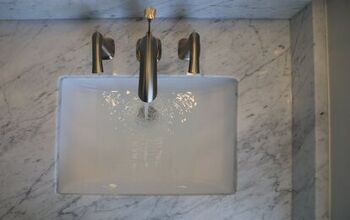How To Keep Warm At Home Without Heating

High heating bills are among the most dreaded parts of winter. However, it is posible to turn the furnace off without sacrificing warmth and comfort. Staying warm at home during the winter without heating is much easier than you may think.
The key to keeping warm at home without heating is to open your curtains during the day and shut them at sunset. Using natural light to heat your home can cut heating costs by 10% to 20%, especially if you reflect the light. Wear several layers on cold days and put a rug on the floor to trap warm air.
You can also run a space heater, but you shouldn’t rely on it 24/7, as that’s unsafe. Follow along as we explore how to keep warm at home without heating this fall and winter.
How To Stay Warm Without Running A Big Heating Bill
1. Wear Layers
The easiest, most timeless way to stay warm at home without heating the house is to wear layers. This is something that many people learn as children when their parents encourage them to layer up on cold days. However, simply putting on several random layers of clothes won’t necessarily help, and it may be uncomfortable.
Think carefully about each layer of clothes you put on, or else you may wind up with a bulky mess. Ideally, you should start with warm socks and a layer of thin, body-conforming clothes before you grab a hoodie. Next, you can put on a thicker, baggier layer, which should trap some warm air between layers.
From there, it’s a good idea to put on a hoodie, crewneck sweatshirt, turtleneck, or light jacket. This may take some trial and error, as mismatched layers can feel overly bulky and too warm. That said, it won’t take long to figure out the perfect layering to stay warm all winter.
2. Cover The Floor
You’d be surprised at how much covering the floor can make your home feel warmer during the winter. Even a simple little rug can serve as an extra form of insulation throughout the fall and winter. Granted, carpeting is the best option, but not everyone has the time and money to install carpeting on a whim.
As warm air rises, cold air continues to cool your home. This is especially true if you have a poorly- nsulated basement or crawlspace beneath the floor. Wool carpeting and rugs are especially useful for keeping your home warm without a furnace.
Pay attention to which parts of your house feel the coldest when outdoor temperatures drop. Area rugs cover the most ground, which typically cost $180 to $600.
3. Use Weatherstripping
It’s hard to stay warm at home without heating when your home’s entry doors have gaps beneath them. Cold air will continually enter your home through the gaps beneath your doors during the fall and winter. Even worse, warm air will leave your house when the sun goes down, which is wasteful when using a furnace.
That said, sealing these gaps with weatherstripping can eliminate the need to run your furnace. Today, you can find enough weatherstripping to seal a door for as little as $7 to $50. The cost varies based on the material and door dimensions.
You can also find pre-measured door sweeps to place beneath your doors for roughly $30 each. This can help you save a fortune compared to hiring a professional to seal your door gaps. Doing so will also help keep bugs and other pests out of your house this winter.
4. Run A Space Heater
Space heaters may heat your home, but they’re nothing like a furnace or heat pump. Running a space heater is relatively inexpensive and can help you get through cold winter days. Today, you can find radiant space heaters and convection space heaters.
Radiant space heaters are effective, but in many cases, they can unfortunately take a while to heat a room. Convection space heaters work much faster and can effectively heat a large, enclosed room. That’s why many people prefer convection heaters, especially when trying to avoid large energy bills.
However, you must follow some key space heater safety tips, as they carry some risks. Keep your space heater at least 3 feet away from any flammable object or material, such as paper and chemical cleaners. Never plug a space heater into an extension cord or leave it running when you aren’t home.
5. Embrace Natural Sunlight
Natural sunlight is your best friend during the fall and winter, but only if you take advantage of it. You can reduce your fall and winter heating costs by up to 20% if you embrace natural sunlight. That’s especially true if you have several windows that face the sun, which is like winning the lottery.
Ideally, you should uncover all your sun-facing windows during the day throughout the winter. This, paired with sealed door gaps, should help your home heat up and stay warm. It also helps to set up some mirrors near the windows, so you can reflect sunlight throughout your house.
You can also reflect sunlight if your walls have glossy paint, but not everyone wants to repaint their walls. Skylights and sun tunnels can also help heat your home without running a furnace. Clear the area in front of your windows to ensure warm, unobstructed light shines into your home all day.
6. Reinsulate Your Home
No matter what you do, you will struggle to stay warm at home this winter if your home isn’t properly insulated. It may have once been properly insulated, but eventually, you must upgrade your insulation. This is especially true if the insulation in your home hasn’t been replaced for 10 to 30 years, depending on the material.
That said, you may not necessarily need to reinsulate your entire house. However, you should focus on problematic areas that let cold air enter your home and fail to retain warm air. That may include your attic, basement, or crawlspace.
You can expect to spend roughly $1,800 to insulate a mid-to-large-sized room if you hire a professional. However, whole-house insulation typically costs over $10,000, but it varies based on the home's size and the type of insulation.
7. Close The Curtains At Night
As previously mentioned, it’s important to uncover your windows throughout the day during the winter. However, closing the curtains at night before it gets dark is equally important for staying warm. You can help keep the warm air inside your home if you close the curtains at night.
The curtains will essentially act as an extra layer of insulation, as they’ll trap air in a small pocket. Timing is important, so close the curtains before the sun goes down. Otherwise, you may lose some warm air when it gets too dark outside.
Thick curtains can also help keep drafts at bay if your windows have small gaps and cracks. If needed, set a reminder to open your curtains in the morning and close them in the early evening.
8. Seal Window And Wall Gaps
Gaps and cracks in your windows and exterior walls can make your home uncomfortably cold during the winter. Luckily, you can easily seal such gaps and cracks without hiring a professional. You typically only need to use expanding foam and caulk to seal the most common window and wall gaps.
Doing so will ensure warm air stays in your home and cold air stays out. Brands like Loctite, Gorilla, Great Stuff, and Duck Brand make great caulking products. Carefully examine all your windows and exterior walls to identify and fix cracks before it gets too cold.
Summing It Up
You can stay warm at home without a furnace if you wear several layers of clothing and put weatherstripping under your door gaps. It’s also important to open your curtains during the day to let the sun heat your home and close the curtains at night to keep the warm air inside. Seal the gaps and cracks in your exterior walls and windows to ensure warm air doesn’t leak out.
Related Guides:

Nick Durante is a professional writer with a primary focus on home improvement. When he is not writing about home improvement or taking on projects around the house, he likes to read and create art. He is always looking towards the newest trends in home improvement.
More by Nick Durante












![10 Best Cordless Leaf Blowers – [2022 Reviews & Ultimate Guide]](https://cdn-fastly.upgradedhome.com/media/2023/07/31/9070789/10-best-cordless-leaf-blowers-2022-reviews-ultimate-guide.jpg?size=350x220)














